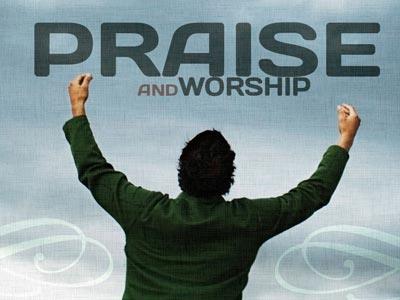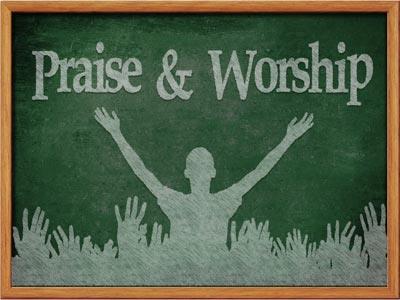-
The Activities Of Worship Series
Contributed by Kerry Bauman on Dec 20, 2005 (message contributor)
Summary: This messages takes a look at the New Testament practice of worship.
The Activities of Worship
Text: Ephesians 5:15-20
Introduction: Two young newlyweds were preparing to enjoy their first baked ham dinner in their new apartment. After unwrapping the meat and setting it on the cutting board, the wife chopped off both ends of the ham with a butcher knife, tossing the two small ends in the garbage can. “Wait a minute,” said the mystified husband. “Why did you do that? Why did you just cut off the ends of the ham like that?” “I don’t know. My mother always did,” answered the wife. “Maybe it helps bring out the flavor.” Unsatisfied with this answer, the husband called his mother-in-law. “Can you tell me why you cut the two ends off of a ham before you cook it?” "Well,” said the mother, “I’m not really sure why. That’s just the way my mother did her ham, and it was always delicious.” As soon as he hung up he called his wife’s grandmother. “Grandma, we have an important question for you. Can you tell us why you cut the ends off of a ham before you cook it?” “Oh my yes, dear,” answered Grandma in her quiet thin voice. “I cut the ends of the ham off so it would fit in my pan.” Traditions shape our lives, and often take on great meaning, but it’s important to know why we do them. “Because we’ve always done it that way” doesn’t provide sufficient motivation to keep traditions alive, particularly when it comes to worship. It’s not enough to do the same things over and over because it’s what we’ve always done. There has to be a good reason why we choose the various elements contained in a worship service. And, in fact, there is. These were the practices of the early church! The New Testament prescribes and describes what the elements of corporate worship were for the early church and should be for us. Let’s look at them together.
I. The Greeting (See Romans 16:16; Luke 7:45; 1 Peter 5:14). In the early days of the church the kiss, as a token of peace, friendship, and brotherly love, was frequent among all people. Christians used it in their public assemblies, as well as in their occasional meetings. This custom was set aside, not because it was abused, but because, the church grew to where it became impossible to carry out. In some countries the kiss of friendship is still common and rarely, if ever, abused. The shaking of hands is now substituted for it in almost all Christian congregations.
II. Fellowship (See Acts 4:32; 1 John 1:7). The word "fellowship" means to "share in common." Among other things, It is used in the Scriptures in relation to (1) sharing in the blood of Christ (See 1 Corinthians 10:16); (2) sharing one’s faith -- a work of love directed toward the saints (See Philemon 6); sharing our resources (See 2 Corinthians 8:4); and sharing in the sufferings of Christ (See Philippians 3:10).
III. Prayer (See Acts 2:42). This is not referring to personal prayers, but those offered by the body in a corporate setting, a time for the body to seek God together. Consider the content of the prayer (prayed by Paul and those believers who joined him in Macedonia) for the church at Colossae: Thanksgiving for progress in the faith (See Colossians 1:3-8); A request to discern God’s will (See Colossians 1:9); and a request for holy and fruitful living (See Colossians 1:10). Note the nature of the prayers: All of them are God-centered requests.
IV. God’s Word (See 1 Timothy 4:13). Paul instructed Timothy to devote himself to three things which were considered familiar activities in the congregation until he was able to come. The idea is that these are the very same things that Paul will do when he comes to Ephesus.
A. The reading of the Word (See Acts 13:15; 1 Thessalonians 5:27; Colossians 4:16). God’s Word has power all by itself (See Hebrews 4:12).
B. The preaching of the Word. The word means to ’exhort or encourage’ and probably refers to application to life (See Romans 15:14).
C. The teaching of the Word. The teaching of the Word has to do with explaining the truth faith so that believers are able to recognize heretical teachings (See Ephesians 4:11-14).
V. Music (See Ephesians 5:19; Colossians 3:16; 1 Corinthians 14:26; 1 Timothy 3:16). I doubt that there is a more emotional topic to be discussed by believers than that of music. We have a tendency to breakdown our music into two categories: Hymns (meaning ’old’) and choruses (meaning ’new’). The scriptures do it differently. There were Psalms (from the Old Testament), hymns (for an example see Philippians 2:6-11) and spiritual songs (spontaneous words sung in the Spirit -- these created problems which had to be addressed in 1 Corinthians 14:15.) The purpose of singing in the worship service was twofold: to edify or build up the body and to praise the Lord. Application: We have intentionally chosen to have a blended style of music in our worship services. We do this so that people from every generation can be built-up in Christ and connect in a meaningful way in worship.

 Sermon Central
Sermon Central



